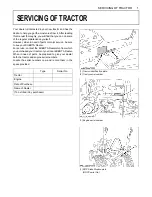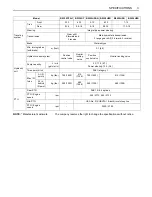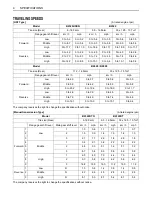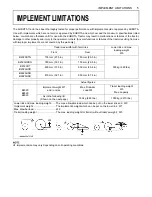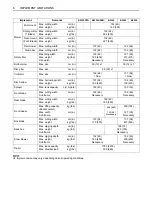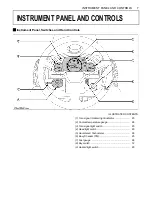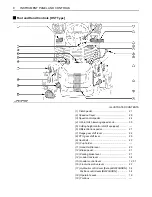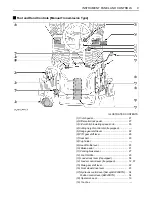
SAFE OPERATION
2
13.Use proper weights on the front or rear of the tractor to
reduce the risk of upsets. When using the front loader,
put an implement or ballast on the 3-point hitch to
improve stability. Follow the safe operating
procedures specified in the implement or attachment
manual.
14. The narrower the tread, the greater the risk of a tractor
upset. For maximum stability, adjust the wheels to the
widest practical tread width for your application. (See
"TIRES, WHEELS AND BALLAST" section.)
15.Do not modify the tractor. Unauthorized modification
may affect the function of the tractor, which may result
in personal injury.
C
Starting
1. Always sit in the operator's seat when starting engine
or operating levers or controls.
2. Before starting the engine, make sure that all levers
(including auxiliary control levers) are in their neutral
positions, that the parking brake is engaged, and that
both the clutch and the Power Take-Off (PTO) are
disengaged or "OFF".
Fasten the seat belt if the tractor has a CAB, a fixed
ROPS or a foldable ROPS in the upright and locked
position.
3. Do not start engine by shorting across starter
terminals or bypassing the safety start switch.
Machine may start in gear and move if normal starting
circuitry is bypassed.
4. Do not operate or idle engine in a non-ventilated area.
Carbon monoxide gas is colorless, odorless, and
deadly.
5. Check before each use that operator presence
controls are functioning correctly. Test safety systems.
(See "Checking Engine Start System" in "EVERY 50
HOURS" in "PERIODIC SERVICE" section.)
Do not operate unless they are functioning correctly.
C
Working
1. Pull only from the drawbar. Never hitch to axle housing
or any other point except drawbar; such arrangements
will increase the risk of serious personal injury or death
due to a tractor upset.
2. Keep all shields and guards in place. Replace any that
are missing or damaged.
3. Avoid sudden starts. To avoid upsets, slow down
when turning, on uneven ground, and before stopping.
4. The tractor cannot turn with the differential locked and
attempting to do so could be dangerous.
5. Do not operate near ditches, holes, embankments, or
other ground surface features which may collapse
under the tractor's weight. The risk of tractor upset is
even higher when the ground is loose or wet. Tall
grass can hide obstacles, walk the area first to be sure.
6. Watch where you are going at all times. Watch for and
avoid obstacles. Be alert at row ends, near trees, and
other obstructions.
7. When working in groups, always let the others know
what you are going to do before you do it.
8. Never try to get on or off a moving tractor.
C
Safety for children
Tragedy can occur if the operator is not alert to the
presence of children. Children generally are attracted to
machines and the work they do.
1. Never assume that children will remain where you last
saw them.
2. Keep children out of the work area and under the
watchful eye of another responsible adult.
3. Be alert and shut your machine down if children enter
the work area.
4. Never carry children on your machine. There is no safe
place for them to ride. They may fall off and be run
over or interfere with your control of the machine.
5. Never allow children to operate the machine even
under adult supervision.
6. Never allow children to play on the machine or on the
implement.
7. Use extra caution when backing up. Look behind and
down to make sure area is clear before moving.
(1) Rear wheels
(A) Tread Width
2. OPERATING THE TRACTOR
(1) Drawbar
Summary of Contents for B2320
Page 1: ......
Page 14: ...SAFE OPERATION 6 7 DANGER WARNING AND CAUTION LABELS ...
Page 15: ...7 SAFE OPERATION ...

















